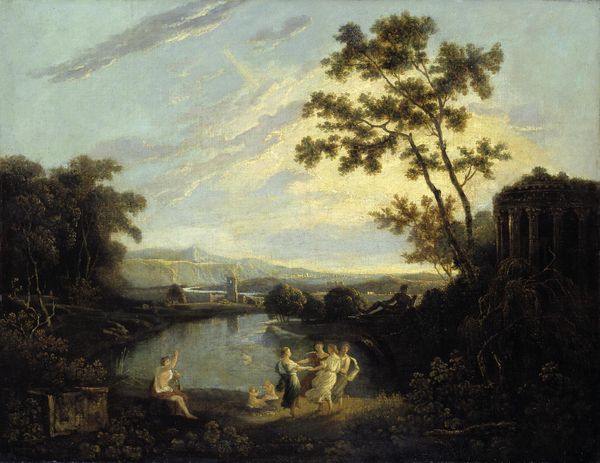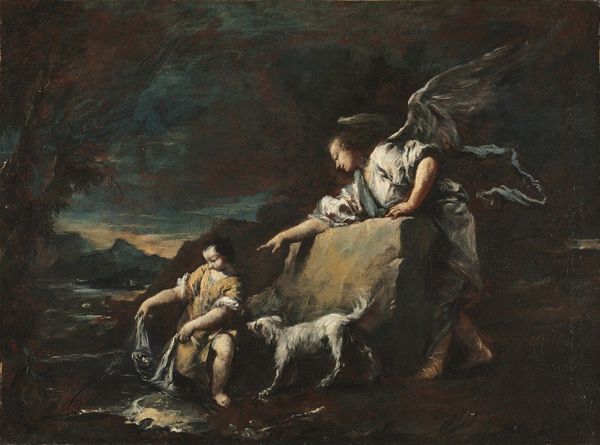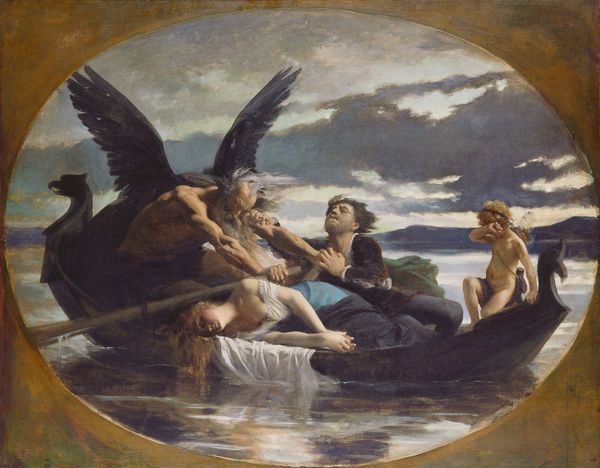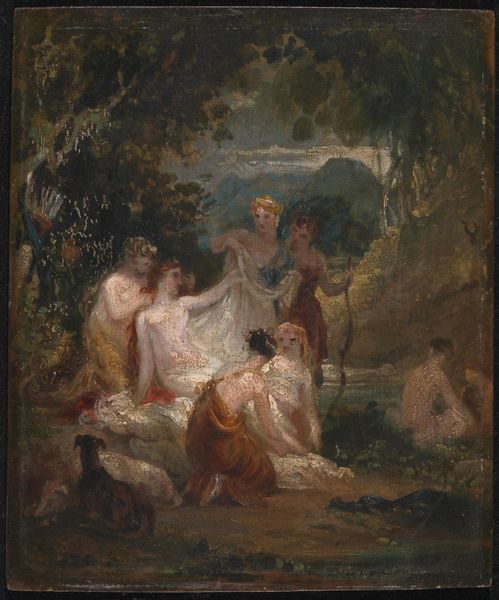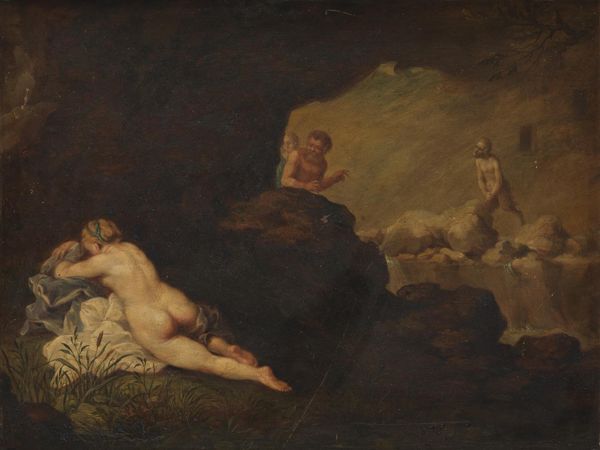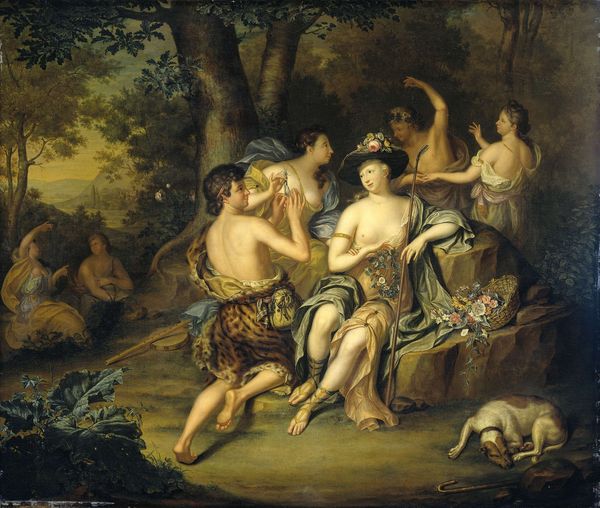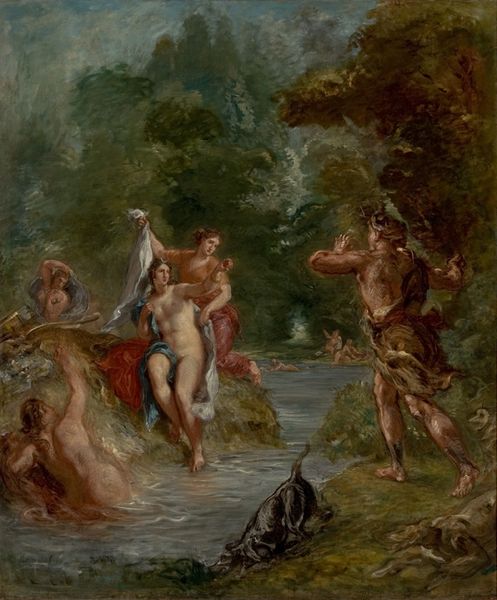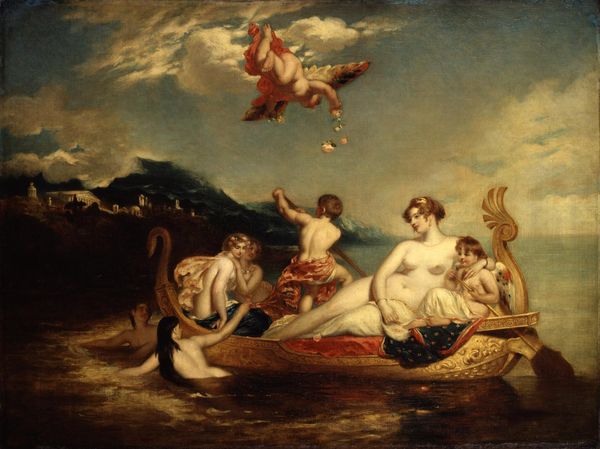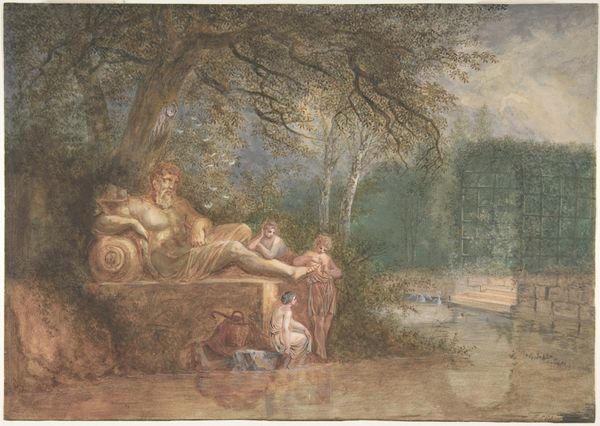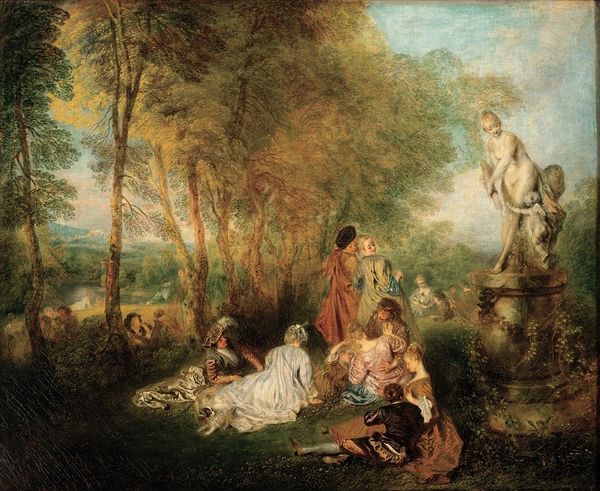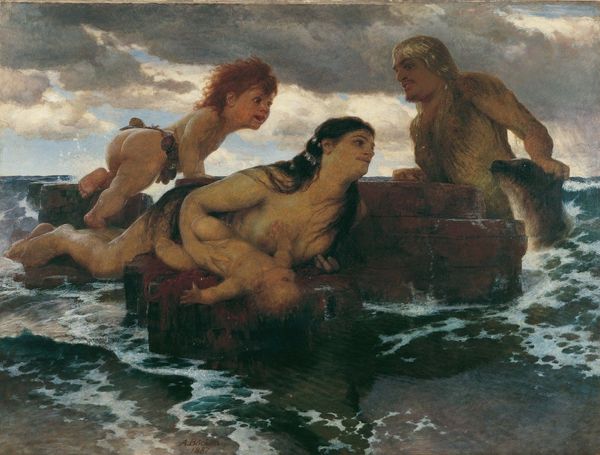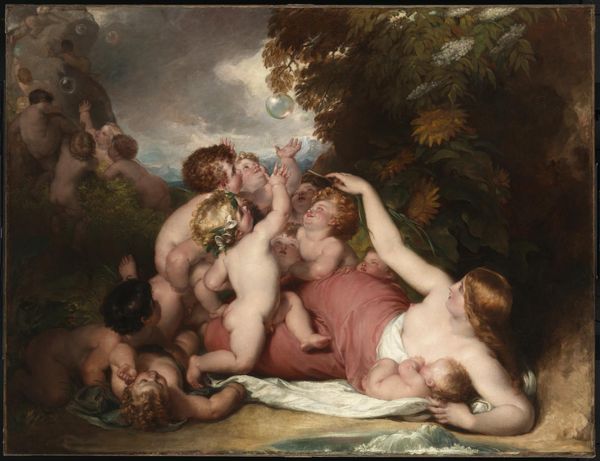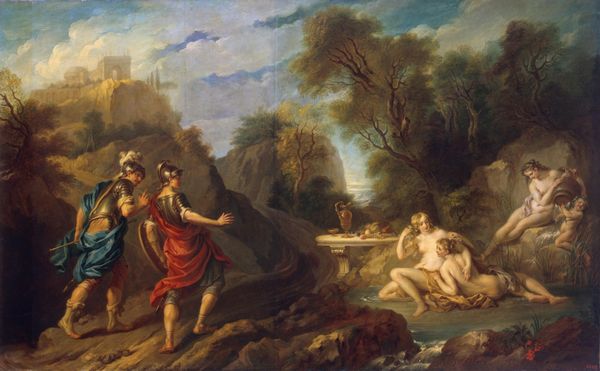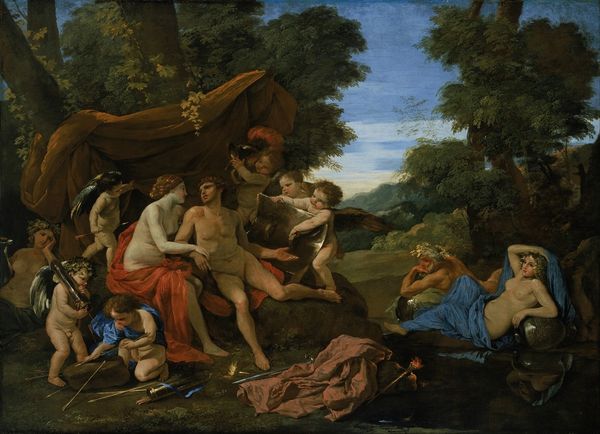
painting, oil-paint
#
allegory
#
painting
#
oil-paint
#
landscape
#
figuration
#
oil painting
#
romanticism
#
mythology
#
history-painting
#
academic-art
Copyright: Public Domain: Artvee
Editor: We're looking at Pierre-Paul Prud'hon's "The Dream of Happiness," an oil painting made after 1819. It depicts figures in a boat, set against a dusky landscape. It feels… wistful, almost melancholic. What's your take? Curator: It's fascinating how Prud'hon engages with both classical mythology and contemporary social anxieties. Look at the central figures – they evoke idealized notions of family and love. But consider the historical context: post-revolutionary France was grappling with profound social and political shifts. Does this idyllic scene, bathed in soft light, then become a form of escapism? A yearning for a lost era of stability and order? Editor: That’s a great point. I hadn’t thought about the revolution’s impact. The dream of happiness becomes almost a political statement in itself, a quiet rebellion against the present? Curator: Exactly! The work can be read as a critique of the present through an idealized past. The artist presents this allegorical dreamscape, but what kind of "happiness" is depicted here? Who has access to it, and at what cost? Notice how the female figures are passively arranged; consider the gender dynamics at play within this constructed "dream." How does this vision align or conflict with the era’s developing feminist discourse? Editor: I see what you mean. It’s beautiful, but definitely more complex than just a pretty picture. It challenges us to unpack those layers. Curator: Prud'hon is prompting us to critically examine the very notion of happiness. Whose dream are we looking at, and who is excluded from it? Art can be so powerful as an invitation to reflect. Editor: I'll never look at Romantic art the same way again!
Comments
No comments
Be the first to comment and join the conversation on the ultimate creative platform.
